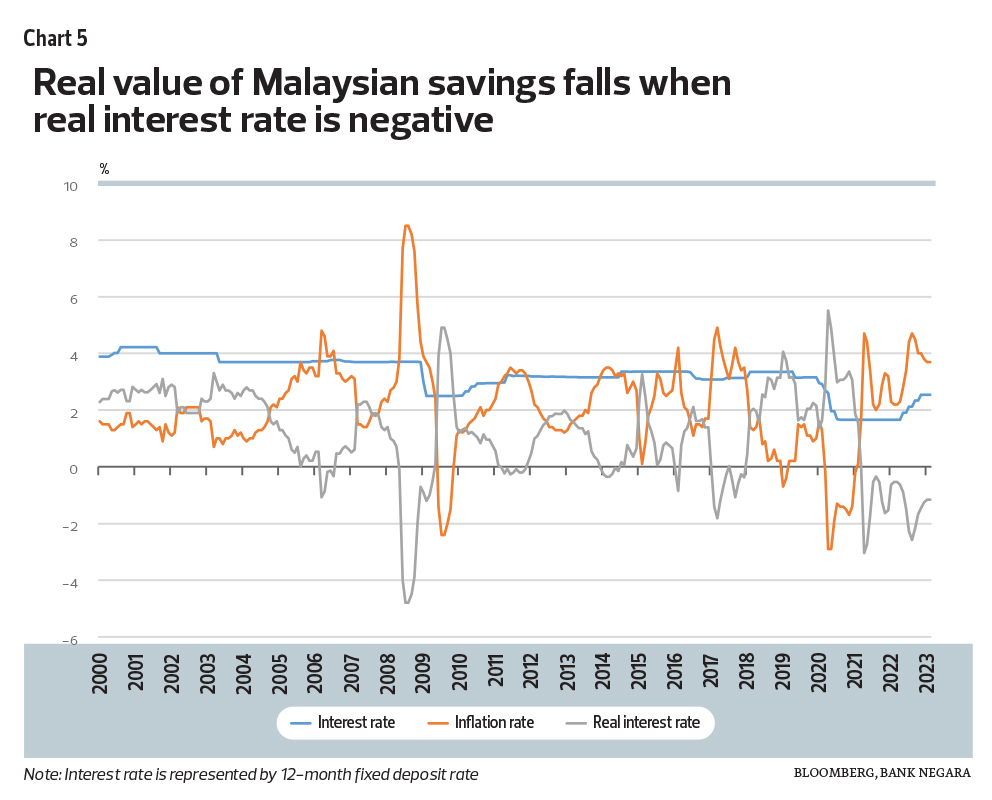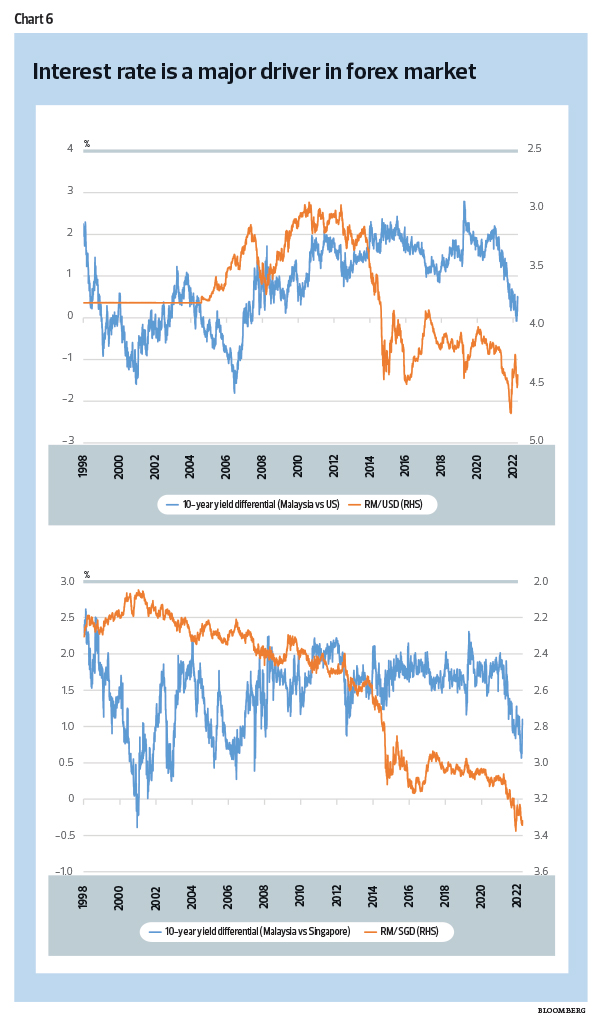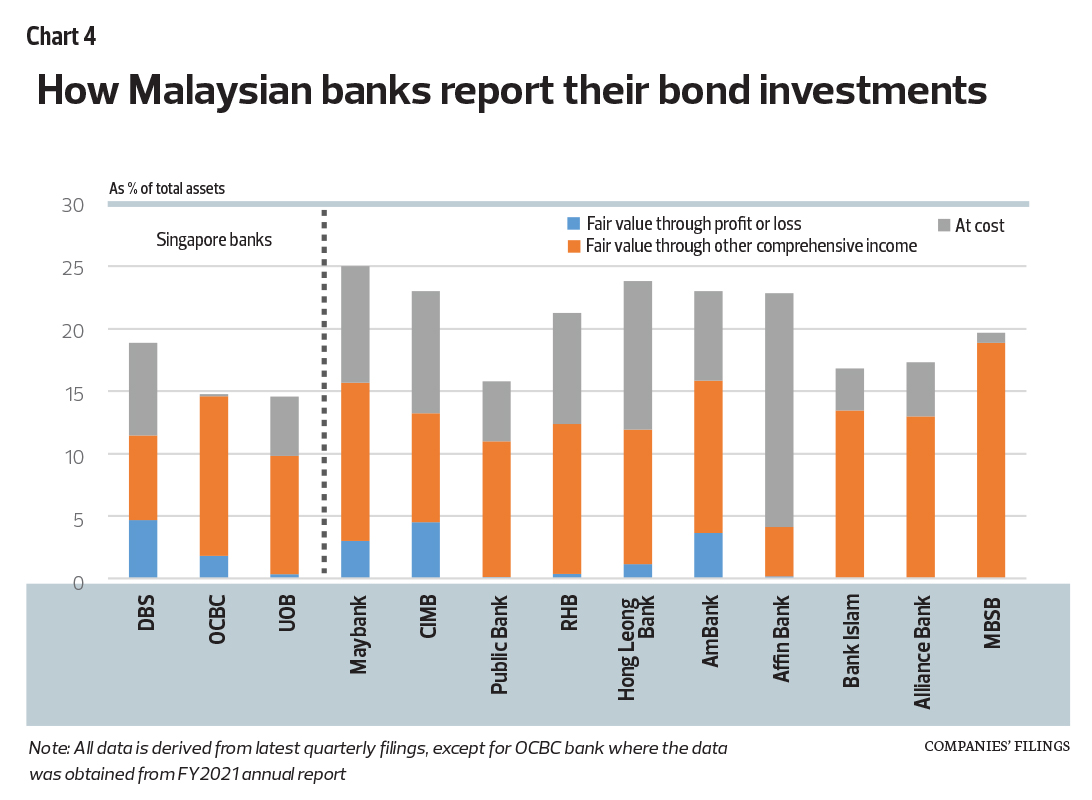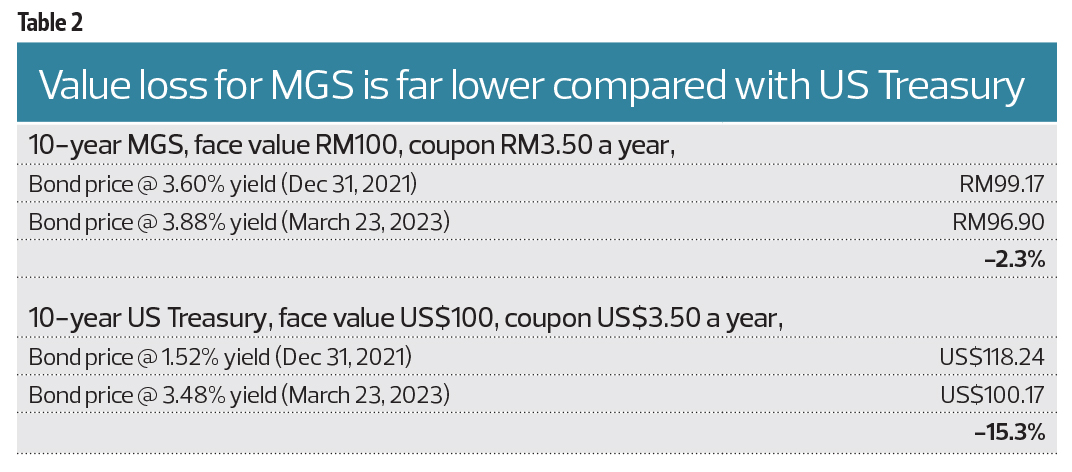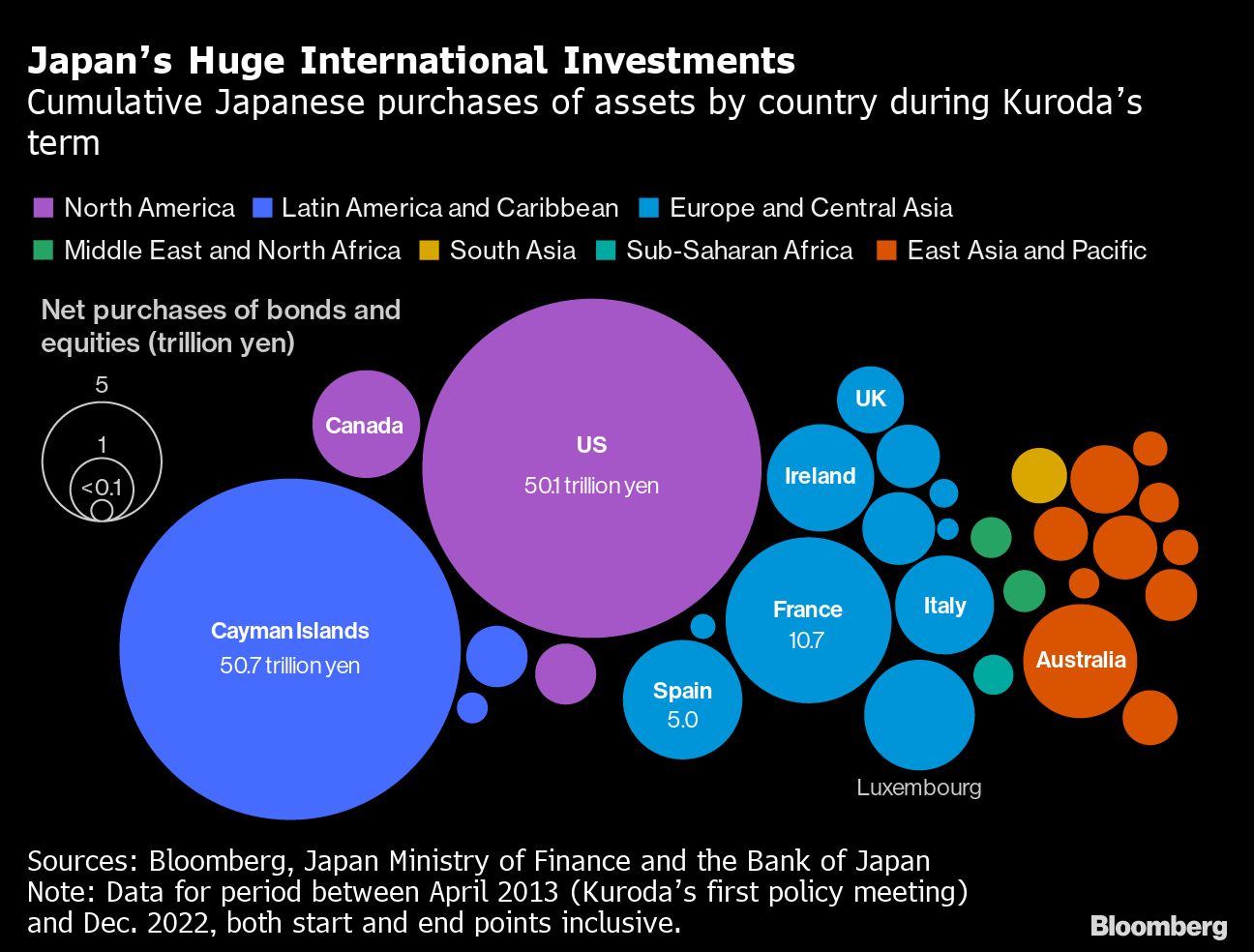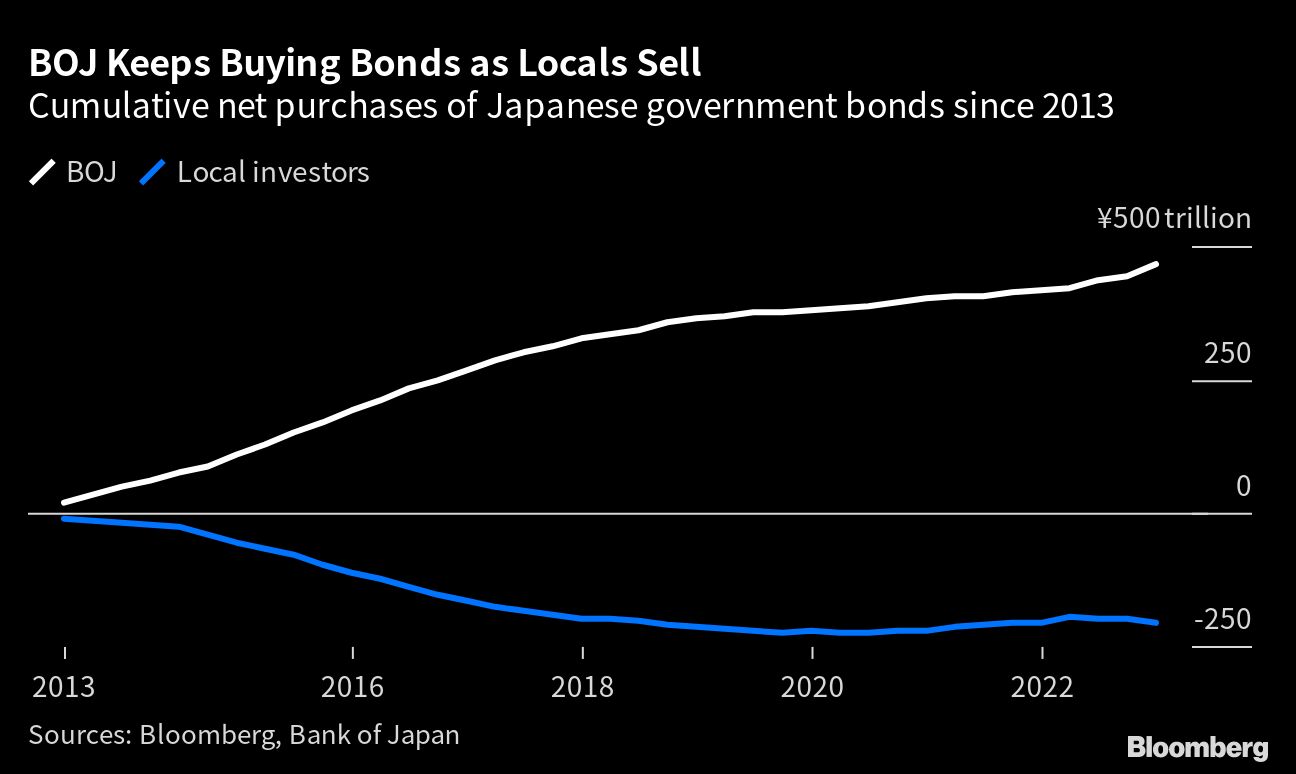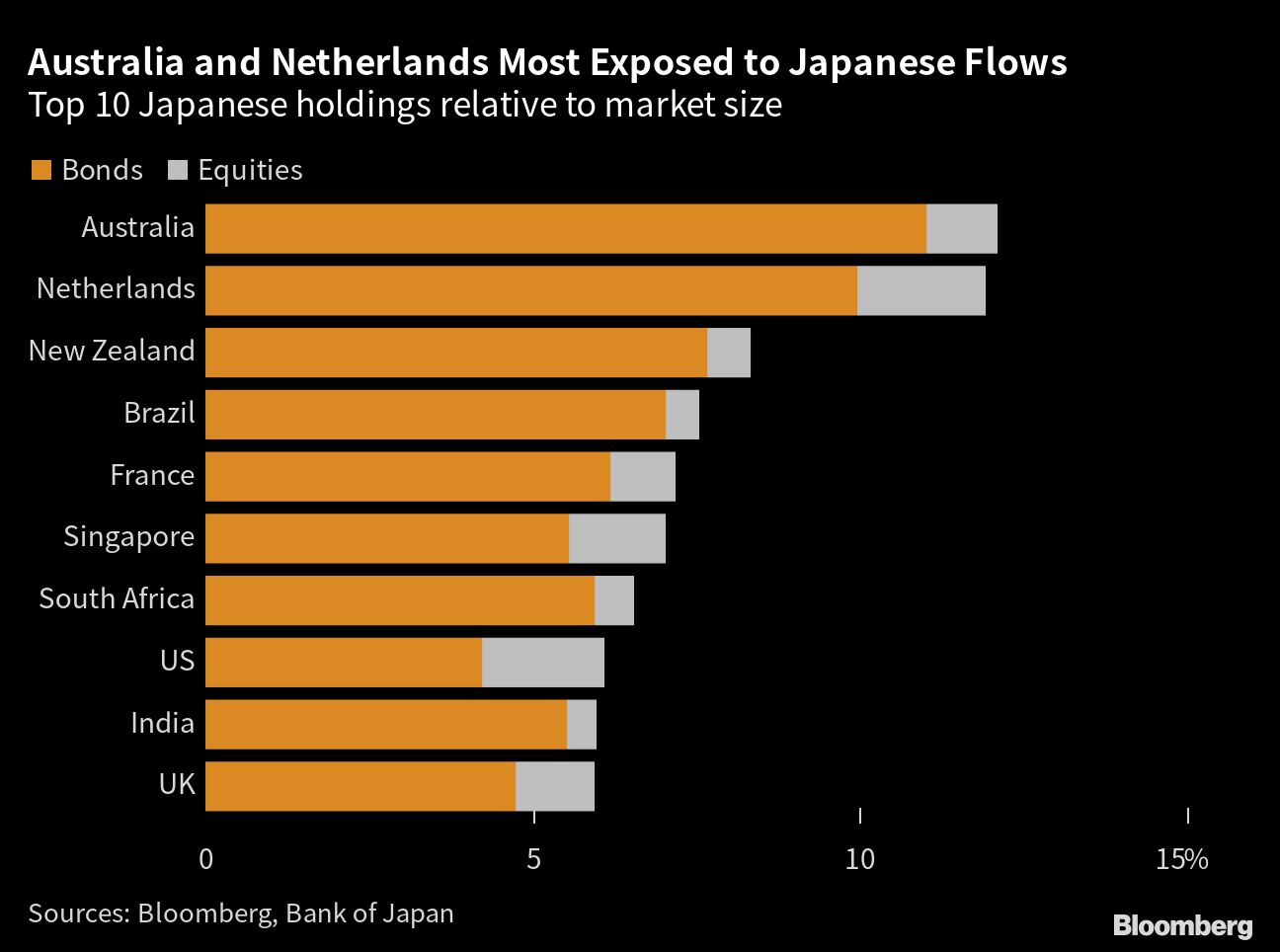Keep INVESTING Simple and Safe (KISS) ****Investment Philosophy, Strategy and various Valuation Methods**** The same forces that bring risk into investing in the stock market also make possible the large gains many investors enjoy. It’s true that the fluctuations in the market make for losses as well as gains but if you have a proven strategy and stick with it over the long term you will be a winner!****Warren Buffett: Rule No. 1 - Never lose money. Rule No. 2 - Never forget Rule No. 1.
Tuesday, 25 April 2023
Bond investing can sometimes fail
Saturday, 22 April 2023
Salutica share price had a big drop after having increased from RM 0.375 to a high of RM 1.72 over 13 days from 31/3/2023.
| Date | Adj Close Price | Volume |
|---|---|---|
| 3/1/2023 12:00:00 AM | 0.26 | 122,800 |
| 4/1/2023 12:00:00 AM | 0.255 | 112,200 |
| 5/1/2023 12:00:00 AM | 0.255 | 469,000 |
| 6/1/2023 12:00:00 AM | 0.25 | 129,700 |
| 9/1/2023 12:00:00 AM | 0.255 | 1,733,000 |
| 10/1/2023 12:00:00 AM | 0.255 | 62,000 |
| 11/1/2023 12:00:00 AM | 0.25 | 312,100 |
| 12/1/2023 12:00:00 AM | 0.255 | 666,500 |
| 13/1/2023 12:00:00 AM | 0.26 | 421,600 |
| 16/1/2023 12:00:00 AM | 0.26 | 221,200 |
| 17/1/2023 12:00:00 AM | 0.28 | 5,650,900 |
| 18/1/2023 12:00:00 AM | 0.275 | 596,300 |
| 19/1/2023 12:00:00 AM | 0.275 | 425,100 |
| 20/1/2023 12:00:00 AM | 0.27 | 507,100 |
| 25/1/2023 12:00:00 AM | 0.275 | 674,300 |
| 26/1/2023 12:00:00 AM | 0.295 | 4,067,600 |
| 27/1/2023 12:00:00 AM | 0.295 | 873,300 |
| 30/1/2023 12:00:00 AM | 0.285 | 1,744,400 |
| 31/1/2023 12:00:00 AM | 0.3 | 5,086,600 |
| 2/2/2023 12:00:00 AM | 0.33 | 6,305,400 |
| 3/2/2023 12:00:00 AM | 0.335 | 4,915,400 |
| 7/2/2023 12:00:00 AM | 0.315 | 1,166,300 |
| 8/2/2023 12:00:00 AM | 0.295 | 1,853,000 |
| 9/2/2023 12:00:00 AM | 0.3 | 739,200 |
| 10/2/2023 12:00:00 AM | 0.315 | 1,443,900 |
| 13/2/2023 12:00:00 AM | 0.305 | 960,400 |
| 14/2/2023 12:00:00 AM | 0.3 | 516,200 |
| 15/2/2023 12:00:00 AM | 0.285 | 1,524,500 |
| 16/2/2023 12:00:00 AM | 0.295 | 528,000 |
| 17/2/2023 12:00:00 AM | 0.295 | 112,800 |
| 20/2/2023 12:00:00 AM | 0.29 | 222,000 |
| 21/2/2023 12:00:00 AM | 0.28 | 883,700 |
| 22/2/2023 12:00:00 AM | 0.275 | 224,000 |
| 23/2/2023 12:00:00 AM | 0.28 | 83,500 |
| 24/2/2023 12:00:00 AM | 0.28 | 322,600 |
| 27/2/2023 12:00:00 AM | 0.245 | 7,673,800 |
| 28/2/2023 12:00:00 AM | 0.24 | 1,040,200 |
| 1/3/2023 12:00:00 AM | 0.24 | 560,400 |
| 2/3/2023 12:00:00 AM | 0.24 | 376,200 |
| 3/3/2023 12:00:00 AM | 0.24 | 1,895,200 |
| 6/3/2023 12:00:00 AM | 0.245 | 204,500 |
| 7/3/2023 12:00:00 AM | 0.25 | 259,700 |
| 8/3/2023 12:00:00 AM | 0.25 | 296,900 |
| 9/3/2023 12:00:00 AM | 0.255 | 171,400 |
| 10/3/2023 12:00:00 AM | 0.25 | 345,200 |
| 13/3/2023 12:00:00 AM | 0.245 | 348,100 |
| 14/3/2023 12:00:00 AM | 0.25 | 518,700 |
| 15/3/2023 12:00:00 AM | 0.25 | 85,500 |
| 16/3/2023 12:00:00 AM | 0.255 | 190,500 |
| 17/3/2023 12:00:00 AM | 0.265 | 195,200 |
| 20/3/2023 12:00:00 AM | 0.26 | 215,700 |
| 21/3/2023 12:00:00 AM | 0.26 | 219,000 |
| 22/3/2023 12:00:00 AM | 0.255 | 137,600 |
| 23/3/2023 12:00:00 AM | 0.255 | 69,900 |
| 24/3/2023 12:00:00 AM | 0.26 | 54,900 |
| 27/3/2023 12:00:00 AM | 0.245 | 86,400 |
| 28/3/2023 12:00:00 AM | 0.25 | 40,000 |
| 29/3/2023 12:00:00 AM | 0.29 | 2,923,500 |
| 30/3/2023 12:00:00 AM | 0.285 | 663,800 |
| 31/3/2023 12:00:00 AM | 0.375 | 33,136,100 |
| 3/4/2023 12:00:00 AM | 0.395 | 10,750,900 |
| 4/4/2023 12:00:00 AM | 0.495 | 37,114,600 |
| 5/4/2023 12:00:00 AM | 0.46 | 26,555,700 |
| 6/4/2023 12:00:00 AM | 0.555 | 25,778,300 |
| 7/4/2023 12:00:00 AM | 0.555 | 12,681,300 |
| 10/4/2023 12:00:00 AM | 0.68 | 50,511,800 |
| 11/4/2023 12:00:00 AM | 0.715 | 22,859,300 |
| 12/4/2023 12:00:00 AM | 0.765 | 37,209,300 |
| 13/4/2023 12:00:00 AM | 0.875 | 32,863,300 |
| 14/4/2023 12:00:00 AM | 1.09 | 56,461,800 |
| 17/4/2023 12:00:00 AM | 1.41 | 41,578,500# |
| 18/4/2023 12:00:00 AM | 1.65 | 60,618,300 |
| 19/4/2023 12:00:00 AM | 1.16 | 65,105,300 |
| 20/4/2023 12:00:00 AM | 0.815 | 100,220,300 |
2023-04-17
| 20/4/2023 Price per share RM 0.815 |
| Market Capital (RM) | EPS (cent) | ||||
| Number of Share | P/E Ratio |
Trade-off of limited interest rate hikes by Bank Negara
Bank Negara’s tempered OPR hikes limit interest rate risks for banking system …
… but there is a trade-off
- First, savers could have obtained more had interest rates gone higher. With high inflation, savings are now earning negative real rates (that is, below inflation) (see Chart 5).
- Second, the trade-off is a weaker ringgit — and higher cost of living for all Malaysians.
The interest rate is the price of money (or credit or time, if one is inclined to be argumentative) — and it certainly is one of the major drivers in foreign exchange movements (see Chart 6); although this relationship is by no means linear or perfect.
- Can a country maintain a relatively low interest rate while also stabilising its exchange rate?
- Is the weak ringgit a function of the interest rate differentials between the ringgit and other currencies or are there even more dominant factors?
Friday, 21 April 2023
How banks account for their bond holdings and treatments for unrealised gains and losses.
Banks have some discretion in terms of accounting for their bond holdings (which is part of financial assets and liabilities) and treatments for unrealised gains and losses.
- Under IFRS 9 (known as MFRS 9 in Malaysia and SFRS 109 in Singapore), bond investments can be measured at cost (if they are intended to be held to maturity) or at fair values (if they may be sold before maturity).
- And there are guidelines for treating changes in fair value measurements — they can be reflected through either the profit and loss (FVTPL) or other comprehensive income (FVOCI).
Under the first option, gains (losses) are recognised in the Income Statements, meaning reported net profit for the period is higher (lower).
Under the second option, gains (losses) are disclosed below the net profit line in the Statements of Comprehensive Income. In this case, the gains (losses) have no impact on reported net profit.
However, both the FVTPL and FVOCI options have balance sheet effects — unrealised gains (losses) will increase (decrease) retained earnings and shareholders’ equity (see Chart 4 for the different approaches in the accounting treatments for bond investments by Malaysian banks).
For instance, Affin Bank and, to a lesser extent, Hong Leong Bank have the highest proportions of bond investments measured at cost, which could indicate that, in the current environment, both their reported net profit and equity may be “overstated”. By comparison, the other seven local banks have, on average, mark-to-market some 63% of their bond holdings. In addition, Maybank, CIMB and Ambank would have adjusted their reported profit lower for a portion of these unrealised losses.
As mentioned above, bond holdings that are mark-to-market will affect balance sheets — unrealised losses or impairments will drag on the capital adequacy ratio of banks.
Herein lies the importance of Bank Negara’s more tempered path for interest rate hikes.
- The smaller interest rate hikes mean lower unrealised capital losses, thus limiting the negative impact on lending capacity and/or need to raise fresh capital.
- Smaller interest rate hikes also help keep a lid on the burden for debt servicing, for leveraged households, businesses as well as the government. Government debt and liabilities totalled RM1.5 trillion, or 83% of GDP.
Interest rate risks for the overall Malaysian banking system is low.
Is SVB a canary in the coal mine?
Clearly, the situation is quite different in Malaysia. For starters, pandemic cash handouts were far smaller and, while deposits also rose during the pandemic — owing to loan moratoriums and lower spending — it was nowhere near the scale of that in the US. Total deposits increased from RM1.968 trillion to RM2.186 trillion between March 2020 and March 2022, or equivalent to just about 11% growth (see Chart 2).
And while investments in government and corporate bonds also rose at the outset of the pandemic — as a result of excess deposits and lower loan demand — the increase was small, from 17.9% in January 2020 to a high of 19.7% of total assets in August 2021. Currently, the average bond holdings among Malaysian banks is 19.1% of total assets, or about RM645.2 billion, compared with 24% in the US banking system. Of note, 90% of the total are made up of local bonds — only 10% of which are foreign currency denominated bonds (see Chart 3).
Bank Negara’s tempered OPR hikes limit interest rate risks for banking system …
More importantly, Bank Negara Malaysia has raised the overnight policy rate (OPR) by only 1%, from 1.75% to 2.75% over the same period (compared with the 4.75% hike in the US FFR). Yields for the benchmark 10-year Malaysia Government Securities (MGS) have risen by even less — from 3.6% at the start of 2022 to 3.88% currently. The yield differential is less than 0.3%. This means the drop in value for 10-year MGS is only about 2.3%, based on our back-of-the-envelope calculations (see Table 2).
This is a huge difference compared to the 15.3% drop in value for the 10-year Treasury. Furthermore, unrealised losses for shorter duration bonds will be much lower. For instance, more than half of Maybank’s bond holdings have durations of less than five years.
In short, total unrealised losses for local banks should be much lower. (Incidentally, the majority of loans [79%] are based on floating interest rates, which are repriced immediately on Bank Negara’s policy rate changes.) Therefore, we think interest rate risks for the overall Malaysian banking system is low. Naturally, some banks will be affected more than others. For instance, Maybank, CIMB, Hong Leong Bank, Ambank, Affin Bank and RHB Bank have a higher percentage of bonds on their balance sheets compared with banks such as Public Bank, Bank Islam, Alliance Bank and MBSB. This could be due to a combination of factors, including deposit inflows, the ability to make loans and the target customer market.
The fallout of Silicon Valley Bank reverberated around the world
The fallout reverberated around the world — turning into a crisis of confidence in the global financial system.
In Europe, the Swiss government instructed UBS Group AG to mount an emergency rescue of compatriot Credit Suisse Group AG, which, incidentally, is already beset with its own set of problems.
Since the SVB turmoil, banks have lost tens of billions in market value, some more than others.
For instance, leading Japanese banks have been harder hit, as they had accumulated foreign bonds in recent years — in the search for yields on the back of more than two decades of a zero interest rate policy, crowding-out by the Bank of Japan as well as slow loans growth in the domestic market.
https://www.theedgemarkets.com/node/662043
Silicon Valley Bank became the second-largest bank to fail in US history
For a quick recap, Silicon Valley Bank (SVB) became the second-largest bank to fail in US history, the biggest being Washington Mutual Bank in 2008, following a run on the bank.
What happened?
SVB had an abnormally high percentage of bond holdings (56% of total assets) on its balance sheet and as unrealised losses mounted, worried depositors — mostly Silicon Valley start-ups and venture-capital firms with large, uninsured deposits (of more than US$250,000 per account) — rushed to withdraw their money.
The sudden huge outflow of deposits forced SVB to liquidate its bonds at current market values (losses), which then tipped it into insolvency (where the values of liabilities exceeded assets).
The bank had to be taken over by FDIC on March 10 to stem contagion fears.
Another regional bank, Signature Bank, suffered the same fate and went into FDIC receivership just days later.
Despite the quick actions, worries continued to spread to other smaller banks, all of which continue to suffer substantially higher-than-normal deposit withdrawals.
https://www.theedgemarkets.com/node/662043
The issues for SVB are, to a certain extent, idiosyncratic —
- an exceptionally narrow customer base and
- high uninsured deposits (according to various reports, they ranged from 88% to 96% of total deposits),
- abnormally high long-dated bond holdings relative to traditional loans and,
- critically, failure to hedge interest rate risks.
The overall US banking system is, no doubt, suffering from withdrawal symptoms — from excessive government stimulus, near-zero interest rates and massive quantitative easing over the past few years. At the outset of the pandemic, banks were inundated with large deposit inflows — excess savings surged from generous government handout, coupled with little avenue to spend during lockdowns.
Bank deposits increased by nearly US$5 trillion, or 35%, from about US$13.4 trillion in March 2020 to US$18.1 trillion in March 2022 (see Chart 1). Meanwhile, loans to businesses were limited during the pandemic. Banks had to put all these excess cash to work, and many ended up buying Treasuries and especially MBS (new mortgages and refinancing activities saw a huge jump as the housing sector boomed). Then the Fed started hiking interest rates aggressively.
Situation in Malaysia is quite different
Clearly, the situation is quite different in Malaysia.
For starters, pandemic cash handouts were far smaller and, while deposits also rose during the pandemic — owing to loan moratoriums and lower spending — it was nowhere near the scale of that in the US.
Total deposits increased from RM1.968 trillion to RM2.186 trillion between March 2020 and March 2022, or equivalent to just about 11% growth (see Chart 2).
Friday, 31 March 2023
UK State pension age rise to 68 will not be brought forward yet
By Kevin Peachey & Sam Francis
A rise in the state pension age to 68 will not be brought forward yet, the government has announced.
Those born on or after 5 April 1977 will be the first cohort to work to 68, under current plans. A 2017 government review suggested expanding this to include those born in the late 1960s.
The work and pensions secretary said the pension age would not be changed until a further review was carried.
A decision is now expected in 2026, after the next general election.
By law the government is required to examine planned changes to the system every six years.
A recent report found life expectancy for retiring Britons is now two years lower than when the government last reviewed the state pension age in 2017.
Labour said increases in life expectancy were being "dragged down" by a "rising tide of poverty".
A separate review by Baroness Neville-Rolfe looking at what factors the government should take into account when setting the pension age was published on Thursday.
And on Thursday, a further review was commissioned by Work and Pensions Secretary Mel Stride to look into raising the state pension age.
A further study was needed as the previous reviews were "not able to take into account significant external challenges including impact of the Covid pandemic and global inflation caused by Putin's illegal wat in Ukraine", Mr Stride said.
The new review will report within two years of the new parliament, he added.
Labour supported the government's position, but shadow work and pensions secretary John Ashworth said the government had last year said bringing forward an increase in state pension age "was absolutely necessary for the long term sustainability of the public finances".
"Now it turns out with general election only a year away the and the government trailing so badly in the polls, not raising the state pension age is not so reckless after all," he added.
The state pension is a monthly payment currently made to 12.5 million people who have reached qualifying age and have paid enough in national insurance contributions.
Next week, the amount paid will increase by 10.1% in line with the rising cost of living.
That means it will be worth:
- £203.85 a week (up from £185.15) for the full, new flat-rate state pension (for those who reached state pension age after April 2016)
- £156.20 a week (up from £141.85) for the full, old basic state pension (for those who reached state pension age before April 2016)
Work and Pensions Secretary Mel Stride will make a statement in the House of Commons later to confirm the conclusions of the latest statutory review on the pension age.
The Daily Express newspaper, where the story first appeared, said Mr Stride would announce a new review to be carried out after the next election.
The main argument for accelerating a rise in the state pension age has always been that people are living for longer.
The state pension bill is estimated to grow by 35% to around £148bn by 2027-28 according to the Office for Budget Responsibility.
The Institute for Fiscal Studies, a leading economic research group, said that it was a "reasonable estimate" that increasing the state pension age by one year in the late 2030s would save the Government £8bn to £9bn a year in today's terms.
But experts point out that, although the cost of the state pension has been rising, life expectation has stalled recently.
There is also a wide difference in life expectancy across different parts of the country, with people generally likely to live longer in more affluent areas. That creates an added complication when setting a state pension age which is uniform across the UK.
At the moment, the age limit is based on ensuring no-one spends more than one third of their adult life in retirement.
State pension increases currently set out in legislation are:
- A gradual rise to 67 for those born on or after April 5, 1960
- A gradual rise to 68 between 2044 and 2046 for those born on or after April 5, 1977
Proposals to raise the state pension age are often controversial. Riots broke out on the streets of France after the French government decided to force through pension reforms without a vote in parliament.
A US$3 tril threat to global financial markets looms in Japan
SINGAPORE/TOKYO/NEW YORK (March 30): Bank of Japan Governor Haruhiko Kuroda changed the course of global markets when he unleashed a US$3.4 trillion firehose of Japanese cash on the investment world. Now Kazuo Ueda is likely to dismantle his legacy, setting the stage for a flow reversal that risks sending shockwaves through the global economy.
Just over a week before a momentous leadership change at the BOJ, investors are gearing up for the seemingly inevitable end to a decade of ultra-low interest rates that punished domestic savers and sent a wall of money overseas. The exodus accelerated after Kuroda moved to suppress bond yields in 2016, culminating in a mountain of offshore investments worth more than two-thirds Japan’s economy.
All this risks unravelling under the new governor Ueda, who may have little choice but to end the world’s boldest easy-money experiment just as rising interest rates elsewhere are already jolting the international banking sector and threatening financial stability. The stakes are enormous: Japanese investors are the biggest foreign holders of US government bonds and own everything from Brazilian debt to European power stations to bundles of risky loans stateside.
An increase in Japan’s borrowing costs threatens to amplify the swings in global bond markets, which are being rocked by the Federal Reserve’s year-long campaign to combat inflation and the new danger of a credit crunch. Against this backdrop, tighter monetary policy by the BOJ is likely to intensify scrutiny of its country’s lenders in the wake of recent bank turmoil in the US and Europe.
A change in policy in Japan is “an additional force that is not being appreciated” and “all G-3 economies in one way or the other will be reducing their balance sheets and tightening policy” when it happens, said Jean Boivin, head of the BlackRock Investment Institute and former Deputy Governor of the Bank of Canada. “When you control a price and loosen the grip, it can be challenging and messy. We think it’s a big deal what happens next.”
The flow reversal is already underway. Japanese investors sold a record amount of overseas debt last year as local yields rose on speculation that the BOJ would normalise policy.
Kuroda added fuel to the fire last December when he relaxed the central bank’s grip on yields by a fraction. In just hours, Japanese government bonds plunged and the yen skyrocketed, jolting everything from Treasuries to the Australian dollar.
“You’ve already seen the start of that money being repatriated back to Japan,” said Jeffrey Atherton, portfolio manager at Man GLG, part of Man Group, the world’s biggest publicly traded hedge fund. “It would be logical for them to bring the money home and not to take the foreign exchange risk,” said Atherton, who runs the Japan CoreAlpha Equity Fund that’s beaten about 94% of its peers in the past year.
Coming home
Bets for a shift in BOJ policy have eased in recent days as the upheaval in the banking sector raises the prospect that policy makers may prioritise financial stability. Investor scrutiny of Japanese lenders’ balance sheets has grown, on concern they may echo some of the stresses that have floored several regional US banks.
But market participants expect chatter on BOJ tweaks to resume when tensions dissipate.
Ueda, the first ever academic to captain the BOJ, is largely expected to speed up the pace of policy tightening sometime later this year. Part of that may include further loosening the central bank’s control on yields and unwinding a titanic bond-buying programme designed to suppress borrowing costs and boost Japan’s moribund economy.
The BOJ has bought ¥465 trillion (US$3.55 trillion) of Japanese government bonds since Kuroda implemented quantitative easing a decade ago, according to central bank data, depressing yields and fuelling unprecedented distortions in the sovereign debt market. As a result, local funds sold ¥206 trillion of the securities during the period to seek better returns elsewhere.
The shift was so seismic that Japanese investors became the biggest holders of Treasuries outside the US as well as owners of about 10% of Australian debt and Dutch bonds. They also own 8% of New Zealand’s securities and 7% of Brazil’s debt, calculations by Bloomberg show.
The reach extends to stocks, with Japanese investors having splashed out ¥54.1 trillion on global shares since April 2013. Their holdings of equities are equivalent to between 1% and 2% of the stock markets in the US, Netherlands, Singapore and the UK.
Japan’s ultra-low rates were a big reason the yen tumbled to a 32-year low last year, and it has been a top option for income-seeking carry traders to fund purchases of currencies ranging from Brazil’s real to the Indonesian rupiah.
“Almost definitely it contributed to a significant decline of the yen, a massive dysfunctioning of the Japanese bond market,” former UK government minister and Goldman Sachs Group Inc chief economist Jim O’Neill said of Kuroda’s policies. “Much of what happened in Kuroda’s time will partially or fully reverse” should his successor pursue policy normalisation, although the banking crisis may cause authorities to proceed more cautiously, he added.
The currency has pulled back from last year’s lows, helped by a view that normalisation is inevitable.
Add to that equation last year’s historic global bond losses, and Japanese investors have even more reason to flock home, according to Akira Takei, a 36-year market veteran and money manager at Asset Management One Co.
“Japanese debt investors have had bad experiences outside the country in the past year because a substantial jump in yields forced them to cut losses, so many of them even don’t want to see foreign bonds,” said Tokyo-based Takei, whose firm oversees US$460 billion. “They are now thinking that not all funds have to be invested abroad but can be invested locally.”
The incoming president of Dai-ichi Life Holdings Inc, one of Japan’s largest institutional investors, confirmed it was shifting more money to domestic bonds from foreign securities, after aggressive US rate hikes made it costly to hedge against currency risks.
To be sure, few are prepared to go all out in betting Ueda will rock the boat once he gets into office.
A recent Bloomberg survey showed 41% of BOJ watchers see a tightening step taking place in June, up from 26% in February, while former Japan Vice Finance Minister Eisuke Sakakibara said the BOJ may raise rates by October.
A summary of opinions from the BOJ’s March 9-10 meeting showed the central bank remains cautious about executing a policy pivot before achieving its inflation target. And that was even after Japan’s inflation accelerated beyond 4% to set a fresh four-decade high.
The next central bank meeting, Ueda’s first, is scheduled to take place April 27-28.
Richard Clarida, who served as Vice-Chairman at the Federal Reserve from 2018 to 2022, arguably has more insight than most after having known “straight shooter” Kuroda for years and weighed Japan’s impact on US and global monetary policy.
“Markets expect pretty early under Ueda that yield-curve control is dismantled,” said Clarida, who is now global economic advisor at Pacific Investment Management Co. From here Ueda “may want to go in the direction to shrink the balance sheet or reinvest the redemptions, but that is not one for day one”, he said, adding Japan’s tightening would be a “historic moment” for markets though it may not be a “driver of global bonds”.
Gradual shift
Some other market watchers have more modest expectations of what will happen once the BOJ rolls back its stimulus programme.
Ayako Sera, a market strategist at Sumitomo Mitsui Trust Bank Ltd, sees the US-Japan rate gap persisting to a degree as the Fed is unlikely to deliver large rate cuts if inflation remains high and the BOJ isn’t expected to raise rates substantially in the near term.
“It’s important to assess any tweaks and outlooks of the BOJ’s whole monetary policy package when thinking about their implication on the cross-border fund flows,” she said.
Ryosuke Oshima, deputy general manager of product promotion group at Mitsubishi UFJ Kokusai Asset Management Co in Tokyo, is eyeing yield levels as a potential trigger for a shift in flows.
“There might be some appetite for bond funds when the rates move higher, like 1% for the 10-year yield,” he said. “But looking at the data, it is unlikely they reverse all their investment back home suddenly.”
For others like 36-year markets veteran Rajeev De Mello, it’s likely only a matter of time before Ueda has to act and the consequences may have global repercussions.
“I fully agree with the consensus that the BOJ will tighten — they’ll want to end this policy as soon as possible,” said De Mello, a money manager at GAMA Asset Management in Geneva. “It comes down to central bank credibility, it comes down to inflation conditions being increasingly fulfilled now — normalisation will come to Japan.”
https://www.theedgemarkets.com/node/661402


